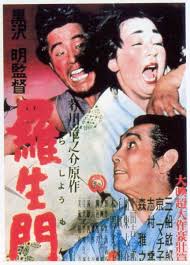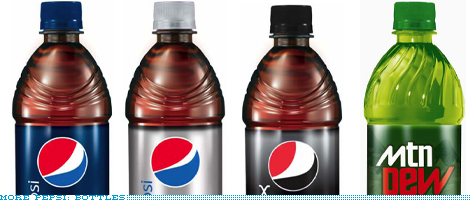The cascading systems failures in the mortgage, insurance, credit, automotive (stopping now...getting tired) industries has led us to a series of running postmortems to try to understand what went wrong--hopefully so we don't, well, do it again. In an article in today's New York Times, Roger Lowenstein has taken on an aspect of the economic debacle that has been largely overlooked: the role of stockholders. Here's a piece:
 Let’s say you own a small business, maybe the local car dealership, assuming it is still extant. One day, you are feeling pinched and sell some shares of the business to a few folks in town. To keep things on the up and up, you create a board.
Let’s say you own a small business, maybe the local car dealership, assuming it is still extant. One day, you are feeling pinched and sell some shares of the business to a few folks in town. To keep things on the up and up, you create a board.
Every year you and the other shareholders get a report from the fellow you hired to manage the dealership. The business runs so smoothly you barely even think about it. Until one day, sales crash and profits, too. You would like to sell your stock, but it is in the tank. So you ring up the manager to see what happened. “Simple,” he says. “I quadrupled my bonus and I forgot to order a line of fuel-efficient cars. My bad.” Then he hangs up.
Feeling a little irritated, you try to contact some of the directors, but they are out driving gas-guzzlers that the manager supplied them and don’t seem inclined to return your calls. Now you are very irritated. As the biggest shareholder, you request that your name be included on the proxy ballot for the next election to the board. This the corporation refuses to do. Only the management (or its handpicked board) chooses nominees, and it is an iron rule of American corporations that ballots should not contain more nominees than seats. In the former U.S.S.R., this style of democracy endured for only 72 years. In American business it is timeless. Until last month, anyway, when the Securities and Exchange Commission proposed that shareholders who own at least 1 percent of the stock be able to nominate candidates to run in opposition to — and on the same ballot as — the slate offered by management. (Read the rest here)
The Compensation Gap Yawns
We've been having a pretty good time mocking executives with their huge salaries and giant bonuses. Truth is: as soon as we've moved on and the economy turns around, we'll probably go right back to the compensation structure we've known. We can't keep pretending that executives are solely to blame for bad business decisions and hefty rewards for failure. Truth is: HR wonks like me have been concerned about the canyon-like gap between executive compensation the salary/wages of the average worker. Just about 20 years ago, that ratio was 14:1. Now, amazingly, in the U.S.,
it's over 400:1. That might make some sense if corporate performance had increased by 28%; however, it hasn't.
"What did happen?" Now, there's a complex question.
A piece of the answer is connected to the friction between the rank and file stockholders and executives selected to run companies. The long-held assumption was that stockholders would only think in terms of short-term returns while executives would plan for long-term gain. With the recent trend towards CFO as the feeder pool for CEO's and the anayst-driven mandates towards frequent restructurings, one wonders how much sense this has made--companies seem to be planning by looking in the rear-view mirror for the past quarter's (or worse, the past month's) results.
Stockholders are provided elaborate reports that provided them with enough information...to keep investing. With the moves towards simplification in credit and mortgage documents, I can only hope that this trend will extend to the quarterly and annual reports, so that they can be easily read and understood by people who didn't get their degrees in accounting and finance. And those nominating slates for board members? Well, there's no democracy there. Stockholders are only supplied enough names to fill those empty seats and not a single name more. The SEC is now considering a policy change that will allow stockholders with 1% or more to add names to the board ballots. Good luck with that.
Another element is the composition of the Executive Compensation committees on most boards of directors. Committee members, who design the system of salary and perks that are supposed to spur a leader's best thinking and keep him or her interested in staying are, well, other leaders and corporate board members. In a sense, what has happened is that they've been voting to incrementally and inexorably raise all boats.
The
Business Roundtable, a powerful lobby of corporate CEO's has shifted from their 1970's mandate to serve the interests of customers, employees, stockholders and the communities in which they operate to a single focus: making money for the stockholders, with an eye to ruthlessly reducing expense (read: employees). This shift had lead many thinkers in the areas of leadership and compensation to wonder whether it's infected our corporate goal-setting process with a "profits or perish" mentality. For example, in the 60s, then-Ford CEO,
Lee Ioacocca gave marching orders that would prove both incomplete...and deadly:
Faced for the first time with competition from low-cost, high-mileage foreign imports, Iacocca set a specific target: Ford would design a new automobile that weighed less than 2,000 pounds and sold for under $2,000, and it would be on the showroom floor in time for the 1971 model year. What resulted was a mad dash to create the Ford Pinto.
The rush to roll out the Pinto had lethal consequences. Common-sense safety checks took a backseat to meeting Iacocca's deadline. In particular, engineers failed to examine the decision to place the Pinto's fuel tank only 10 inches behind the rear axle. When the Pinto was rear-ended, it often went up in flames. Fiery rear-end crashes caused 53 deaths, numerous injuries and a string of costly lawsuits. (Read the rest here)
Overly ambitious goals and overly generous compensation: A heady mix.
Now, maximizing stockholder wealth means something quite different when considered against the enormous stock offerings made to corporate execs...and the shift in comp and benefits mix in the last 30 years (from Big-C cash plus stocks to little-c cash plus Bis-S stocks to Big-...um, everything). I get how challenging this is...vesting of stocks is a dicey thing: execs are taxed on the value of the stock when issued--not when vested and received. And stock values have been known to crater to zero in just weeks, leaving execs to jockey for more up-front money as a hedge against stock volatility.
Noted economist, Milton Freidman, in the '70s opined that stockholders would keep companies moving in the right direction. Milty didn't however, anticipate profit-sharing and stock ownership plans for managers on down to key employees or even ESOPs (employee stock ownership plans).
What a hot mess.








